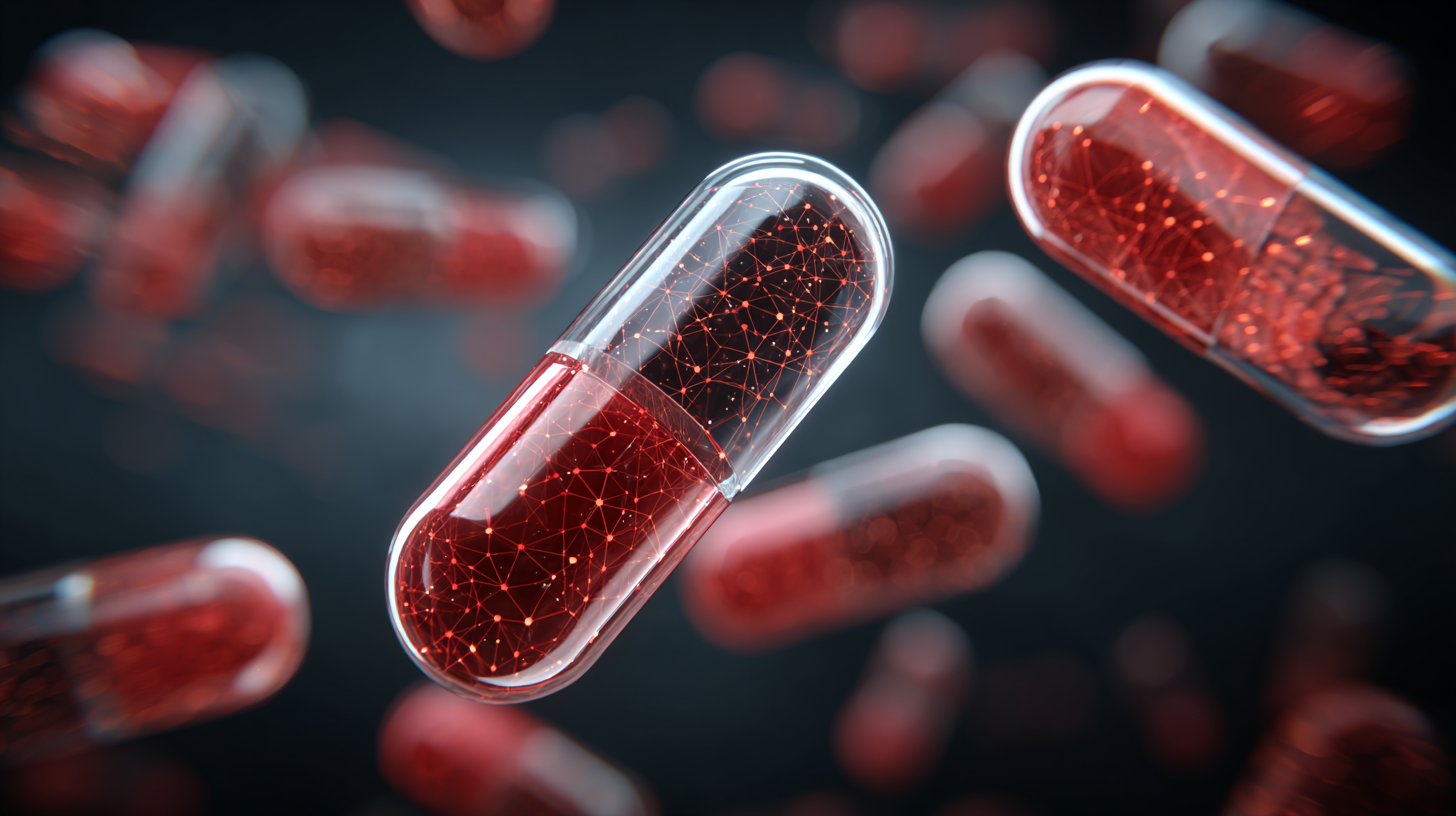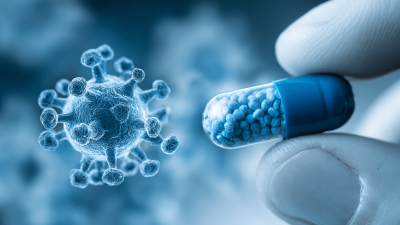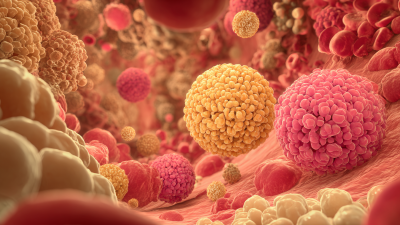Leave Your Message
In the quest for new cancer therapies, the exploration of unconventional agents has gained significant attention, with Nitroxoline emerging as a promising candidate due to its unique "Nitroxoline Anticancer Properties." Originally developed as an antibiotic, Nitroxoline has shown a multifaceted ability to inhibit tumor growth and enhance the efficacy of conventional cancer treatments. Recent studies suggest that its mechanism of action may involve targeting specific cancer cell pathways and enhancing cellular apoptosis, thereby offering a dual approach to combating malignancies. This article aims to delve into the potential of Nitroxoline in modern oncology, providing a comprehensive overview of its anticancer effects, related molecular mechanisms, and practical tips for integrating this therapeutic agent into clinical practice. By unlocking the potential of Nitroxoline, we may be able to pave the way for more effective and accessible cancer treatments that could significantly improve patient outcomes.

Nitroxoline, a quinoline antibiotic traditionally used to treat urinary tract infections, has emerged as a promising candidate in oncology due to its metal-chelating properties. Recent studies highlight its capacity to inhibit lymphoproliferation associated with Epstein–Barr virus and demonstrate antiproliferative effects against various cancer cell lines, particularly in pancreatic cancer. This opens new avenues for exploring nitroxoline's anticancer mechanisms, particularly its ability to form complexes with metals that may disrupt essential cellular processes in cancer cells.
Furthermore, integrative proteomic analyses have revealed that nitroxoline can alter the expression of proteins associated with cell proliferation and survival. These findings suggest that nitroxoline not only targets bacterial infections but also possesses a significant action spectrum against malignancies by modulating key cellular pathways.
This dual functionality of nitroxoline reinforces its potential as a repurposed therapeutic agent, bridging the fields of infectious disease and oncology, and underlines the importance of exploring novel mechanisms of action for legacy drugs in modern medicine.
Nitroxoline, originally developed as an antibacterial agent, has recently garnered attention for its potential applications in oncological treatment. Its unique mechanism of action involves chelating metal ions, which is critical for cancer cell proliferation. By disrupting the availability of essential metal ions, Nitroxoline can inhibit the growth of certain tumor cells, making it a promising candidate for cancer therapies. Recent preclinical studies have shown that Nitroxoline exhibits significant cytotoxicity against various cancer cell lines, indicating its potential effectiveness as an adjunct treatment.
Furthermore, the clinical applications of Nitroxoline extend beyond its direct anticancer properties. As an inexpensive and well-tolerated drug, it has the potential to be integrated into existing chemotherapy regimens. This versatility could enhance treatment outcomes while minimizing side effects associated with conventional chemotherapeutic agents. Current clinical trials are exploring the efficacy of Nitroxoline in combination therapy, aiming to evaluate its impact on tumor response and patient survival rates. By unlocking the anticancer potential of Nitroxoline, the medical community may offer new hope for patients facing daunting oncological challenges.
Nitroxoline, an established antimicrobial agent, is gaining attention for its potential role in cancer treatment. Recent studies suggest that nitroxoline exhibits a comparative effectiveness in disrupting cancer cell proliferation when juxtaposed with traditional chemotherapeutic agents such as cisplatin and doxorubicin. A study published in the Journal of Cancer Research indicated that nitroxoline can induce apoptosis in various cancer cell lines, outperforming standard therapies in some cases. Specifically, data from preclinical trials have shown that nitroxoline reduced tumor growth by approximately 70% in vivo, highlighting its promising role as an adjunct therapy.
Incorporating nitroxoline into treatment regimens could offer a dual benefit—targeting cancer cells while mitigating some adverse effects associated with conventional chemotherapy. For instance, the National Cancer Institute has noted that patient compliance often suffers due to severe side effects of traditional drugs, which nitroxoline may help alleviate.
Tips: When exploring treatment options, consult with your healthcare provider about integrating nitroxoline. Be proactive in discussing all potential therapies, including emerging agents. Remember, individual responses to cancer treatments can vary significantly, so personalized medicine is key.
 Nitroxoline, originally developed as an antibiotic, has emerged as a potential anticancer agent. Its repurposing offers a novel approach to cancer treatment, particularly in patients with breast cancer. Understanding the safety profile and side effects of nitroxoline in cancer patients is crucial as it may lead to enhanced therapeutic strategies. Clinical observations suggest that nitroxoline might work by inhibiting tumor growth and altering cancer cell metabolism.
Nitroxoline, originally developed as an antibiotic, has emerged as a potential anticancer agent. Its repurposing offers a novel approach to cancer treatment, particularly in patients with breast cancer. Understanding the safety profile and side effects of nitroxoline in cancer patients is crucial as it may lead to enhanced therapeutic strategies. Clinical observations suggest that nitroxoline might work by inhibiting tumor growth and altering cancer cell metabolism.
When considering nitroxoline, patients should be aware of common side effects, which may include gastrointestinal disturbances and skin reactions. Regular monitoring and communication with healthcare providers can help manage these adverse effects effectively.
Tips: Always consult with an oncologist before starting any new treatment. Staying informed about potential side effects and reporting them promptly can help in adjusting the treatment plan to ensure safety and effectiveness. Maintaining a balanced diet and a healthy lifestyle can also support overall well-being during cancer treatment.
Recent studies have highlighted the anticancer potential of nitroxoline, a small molecule previously used as an antibiotic, transforming it into a promising candidate for cancer therapy. As researchers explore its mechanism of action, future directions in this area may focus on its efficacy against various cancer types, particularly renal cell carcinoma (RCC). Understanding the structural optimization of nitroxoline may enhance its therapeutic profile and enable the development of targeted treatments.
Tips for researchers include considering combination therapies that utilize nitroxoline alongside existing RCC inhibitors, potentially increasing treatment efficacy. Rigorous clinical trials will be essential to establish dosage, toxicity, and overall effectiveness. Additionally, engaging in multidisciplinary collaborations can provide valuable insights into nitroxoline's behavior in complex biological systems, paving the way for innovative approaches in cancer management. Future research may also investigate personalized medicine strategies, utilizing patient-specific data to tailor nitroxoline treatments and optimize patient outcomes.







